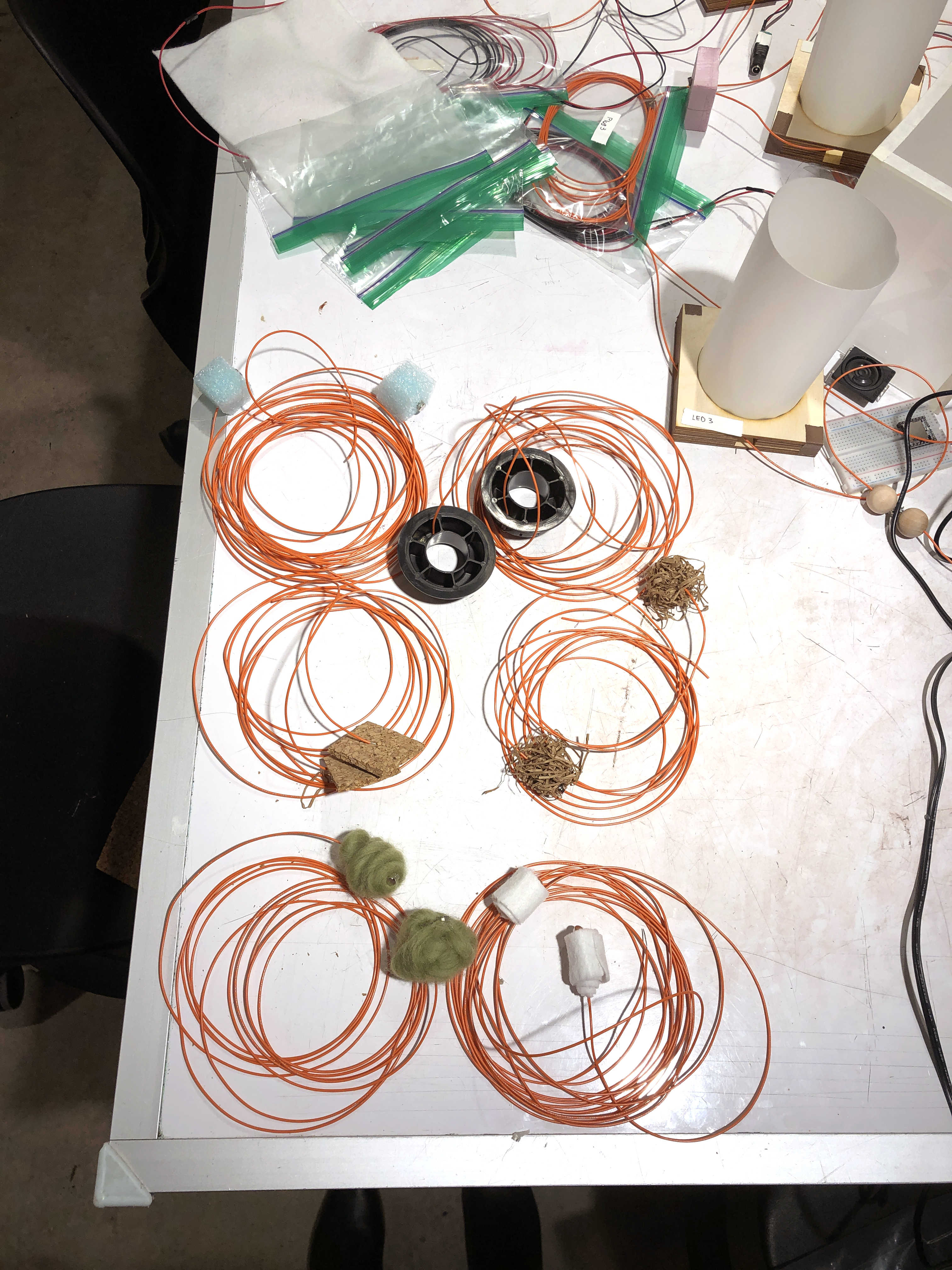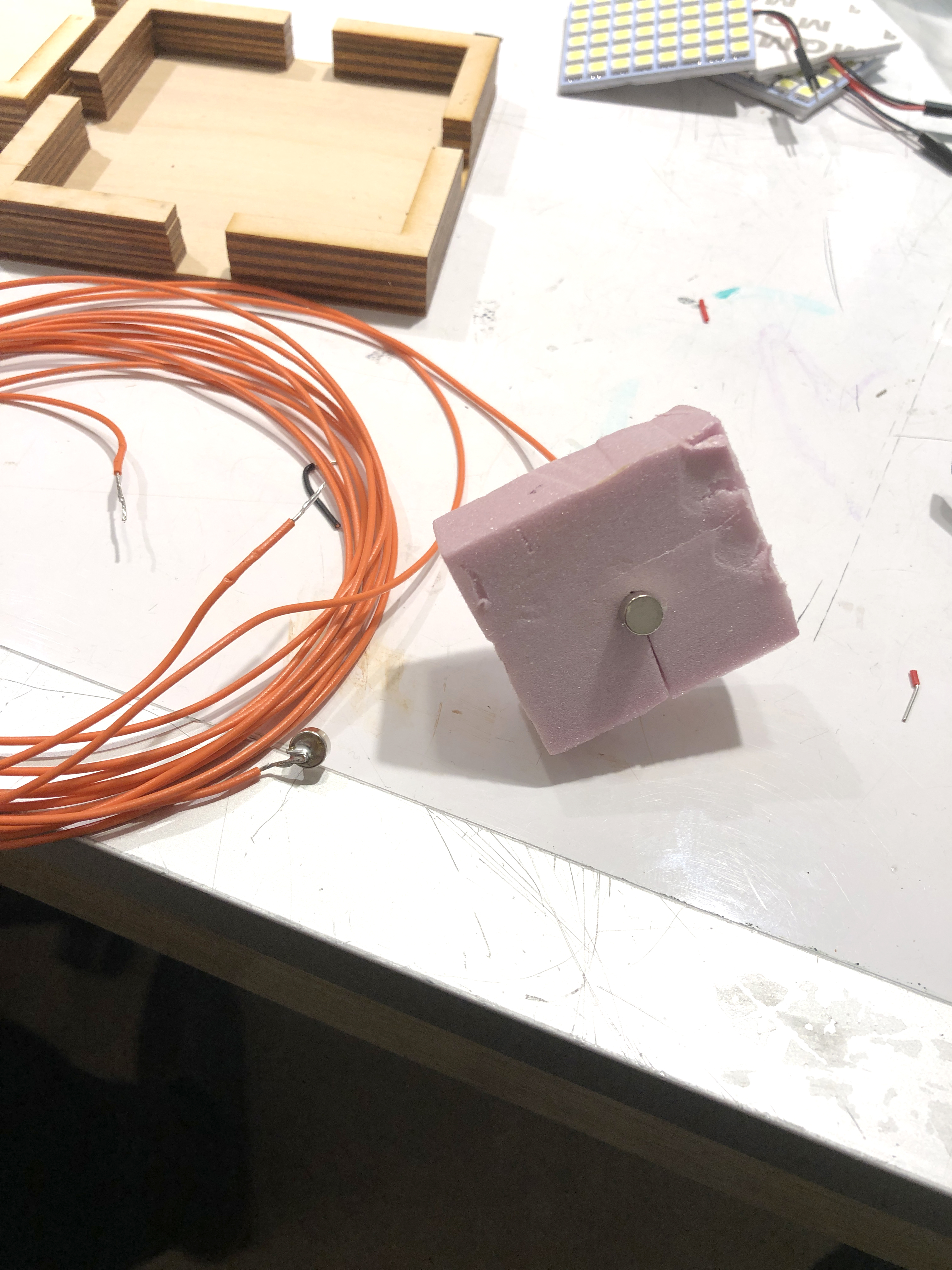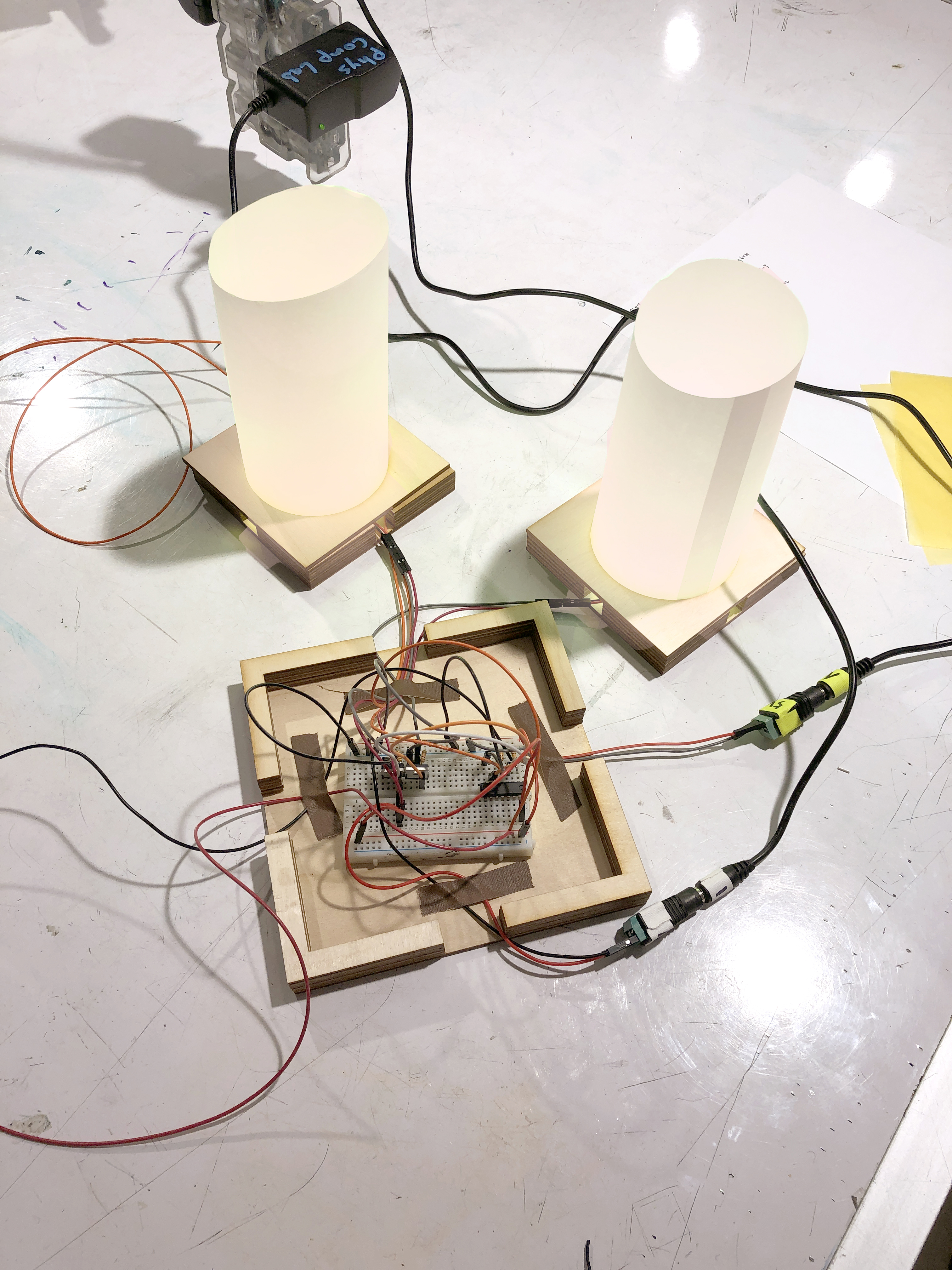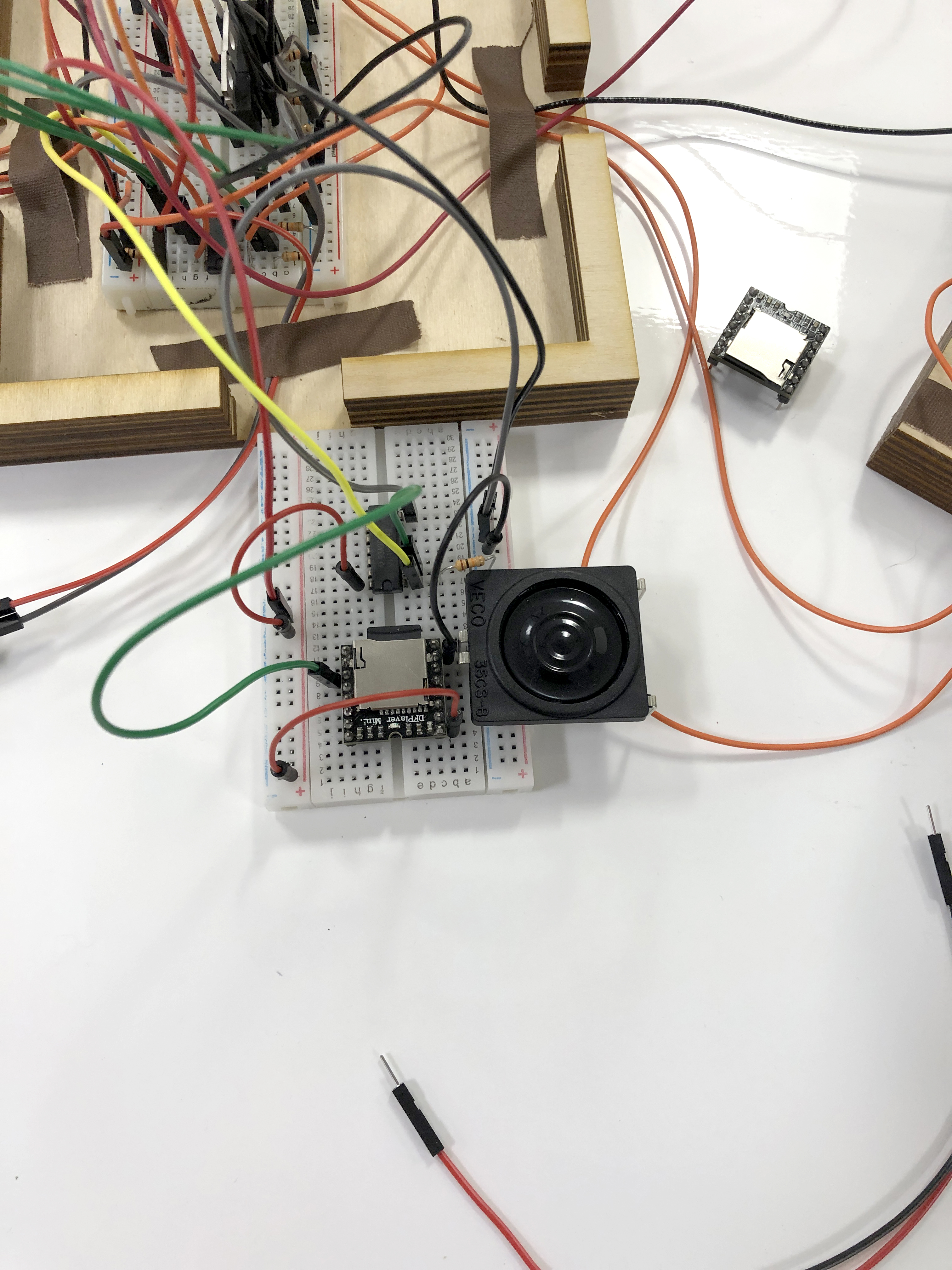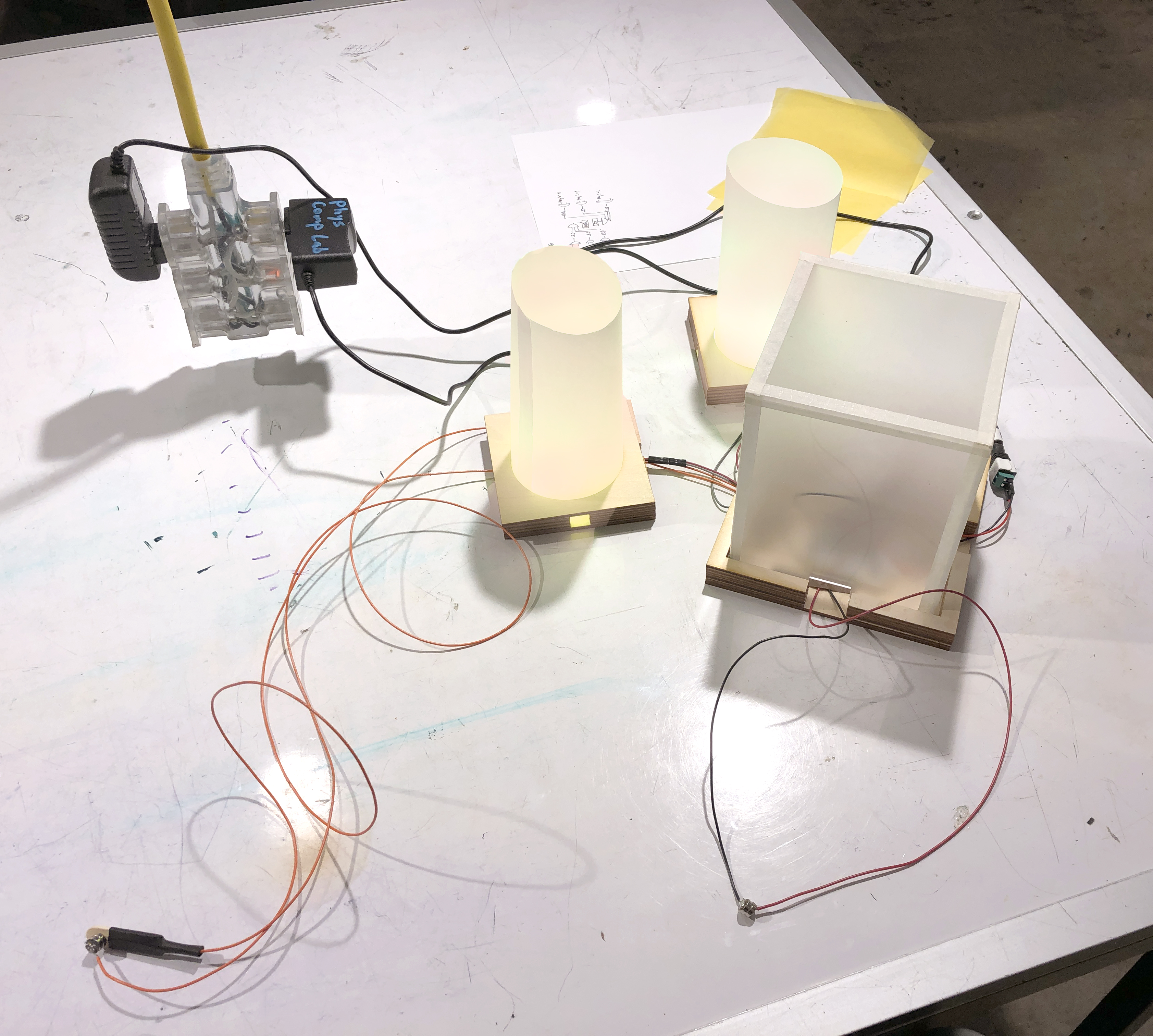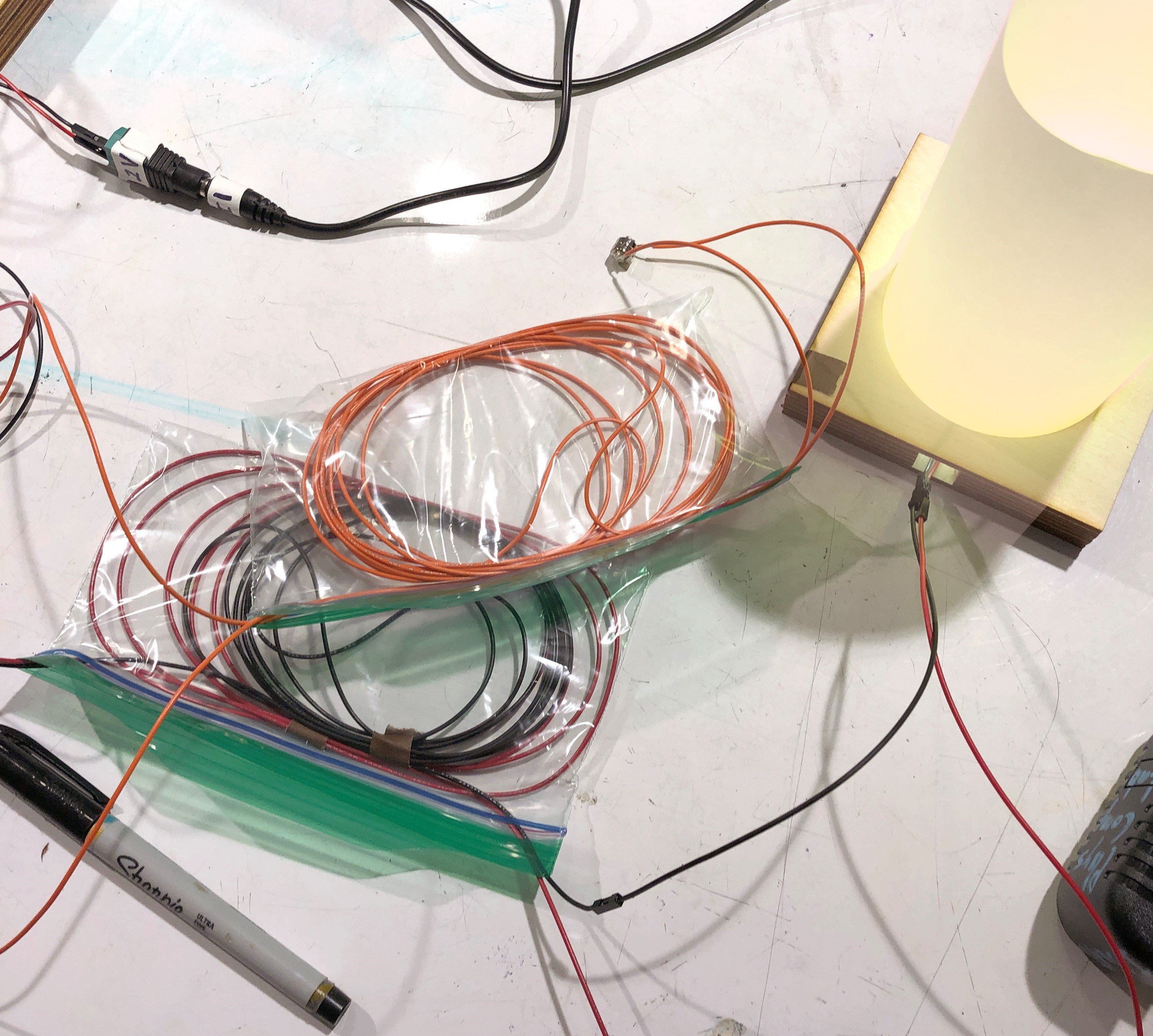Music played through water-filled speakers and generates ripples that are reflected onto a wall. The change in frequency and amplitude causes a variation in the amount of movement on the water surface.
The project seeks to propose another method to push the extent of how music can affect and create an atmosphere that influences the audience in ways other than acoustically.
Final Installation
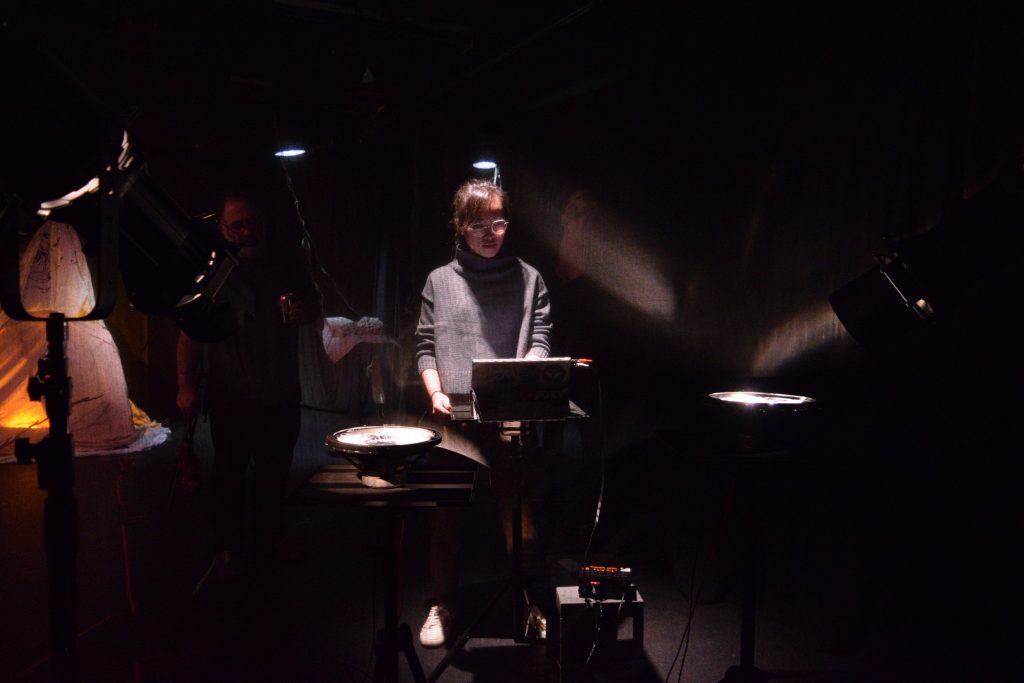
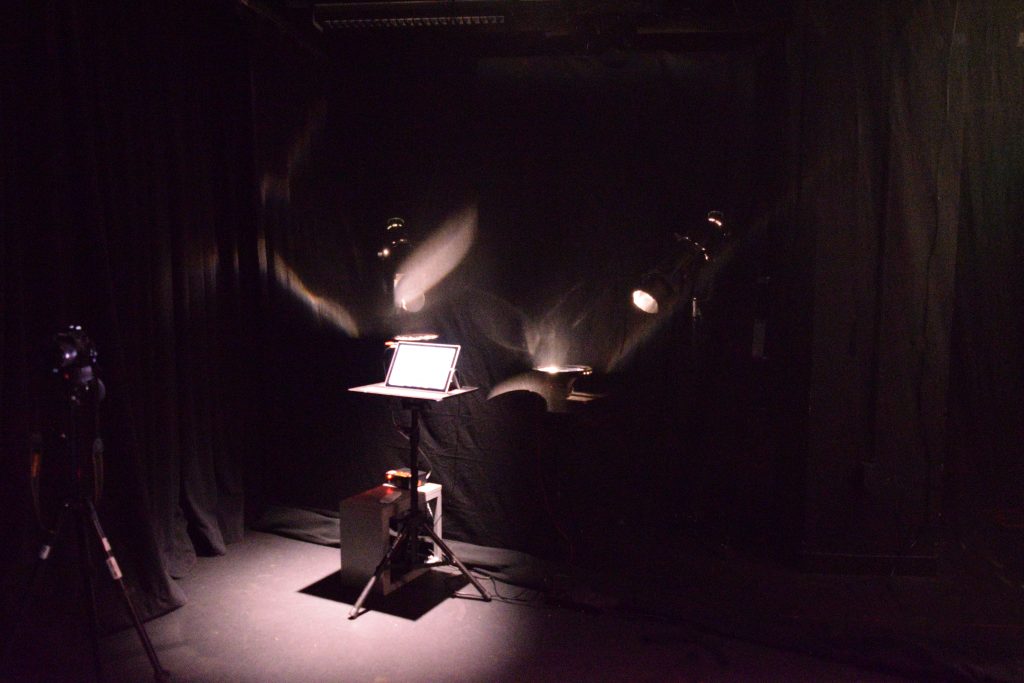
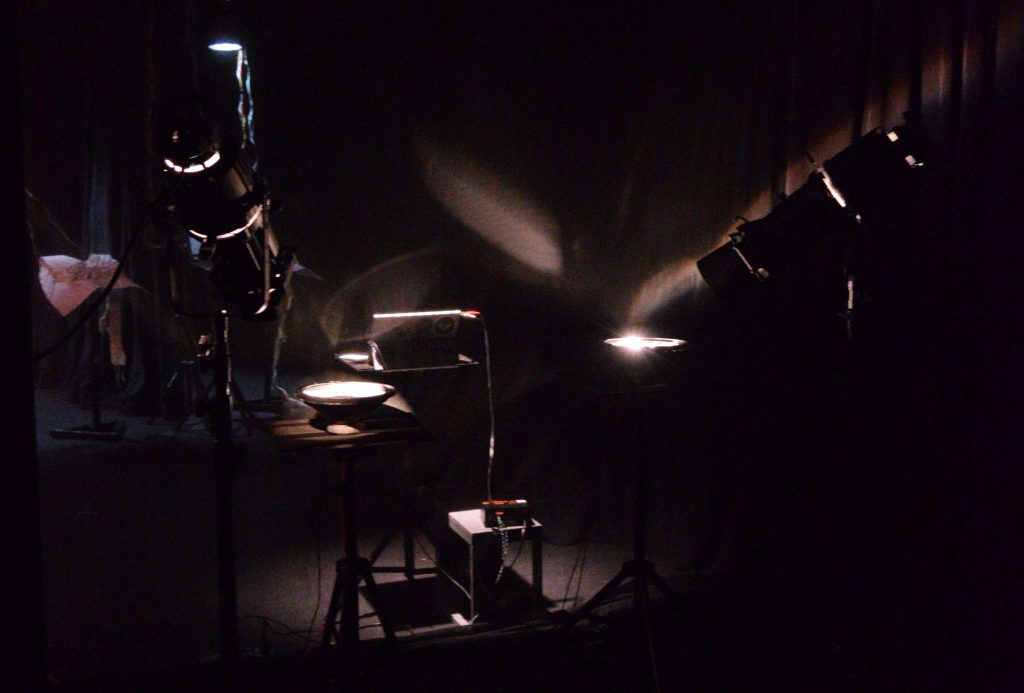
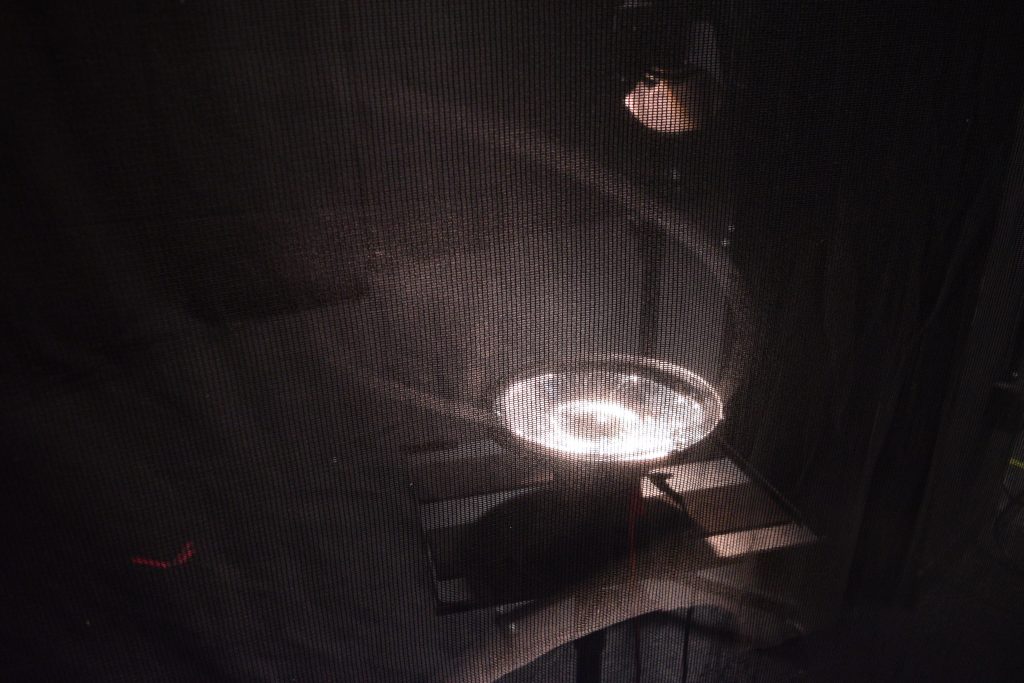
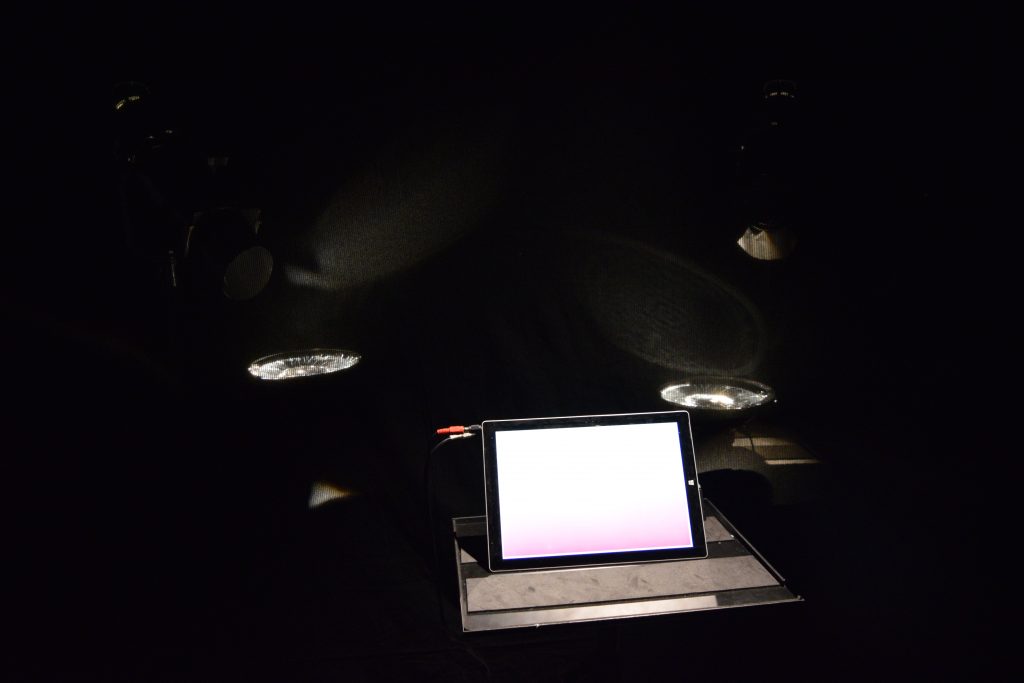
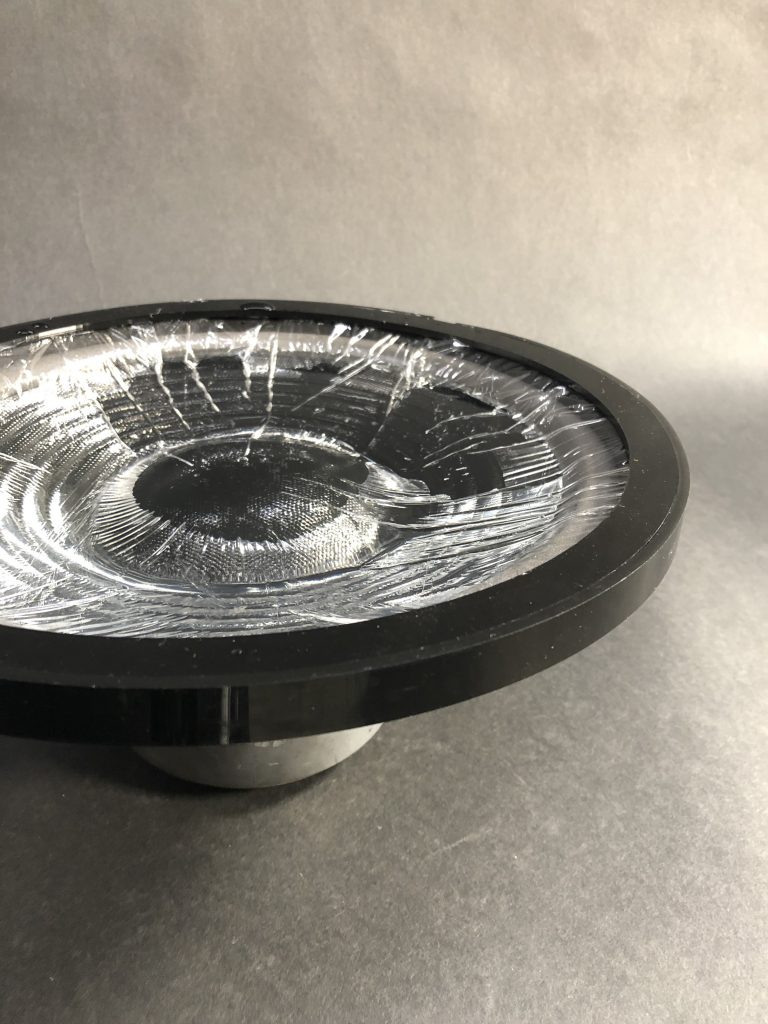
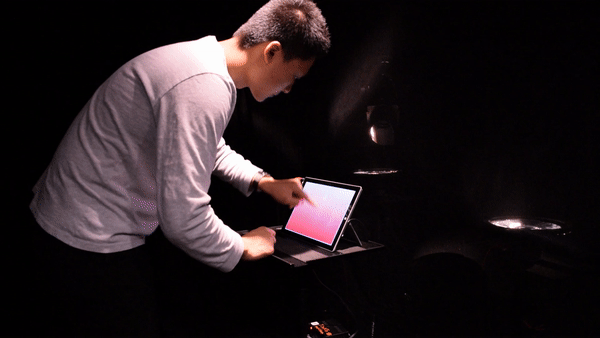
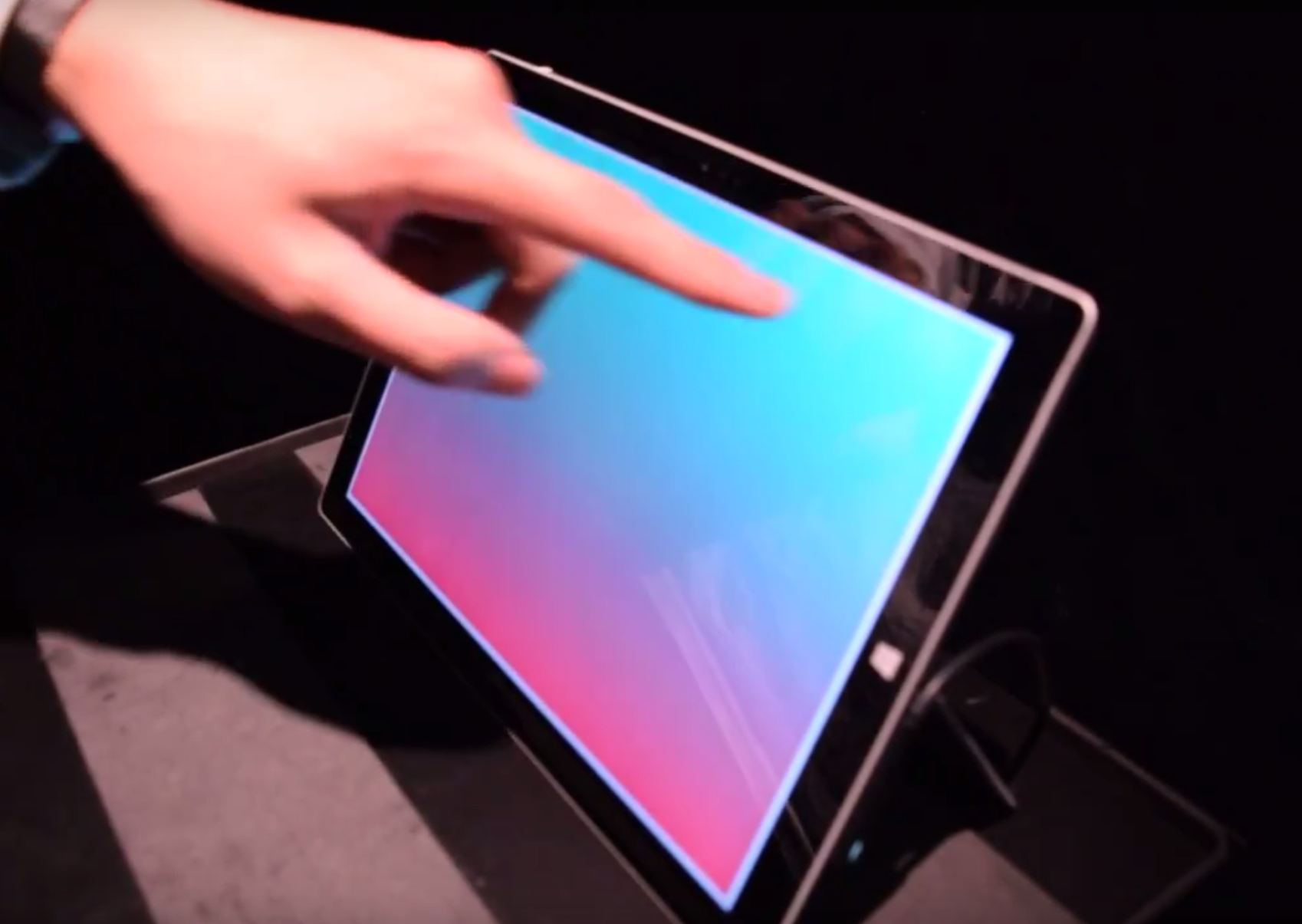
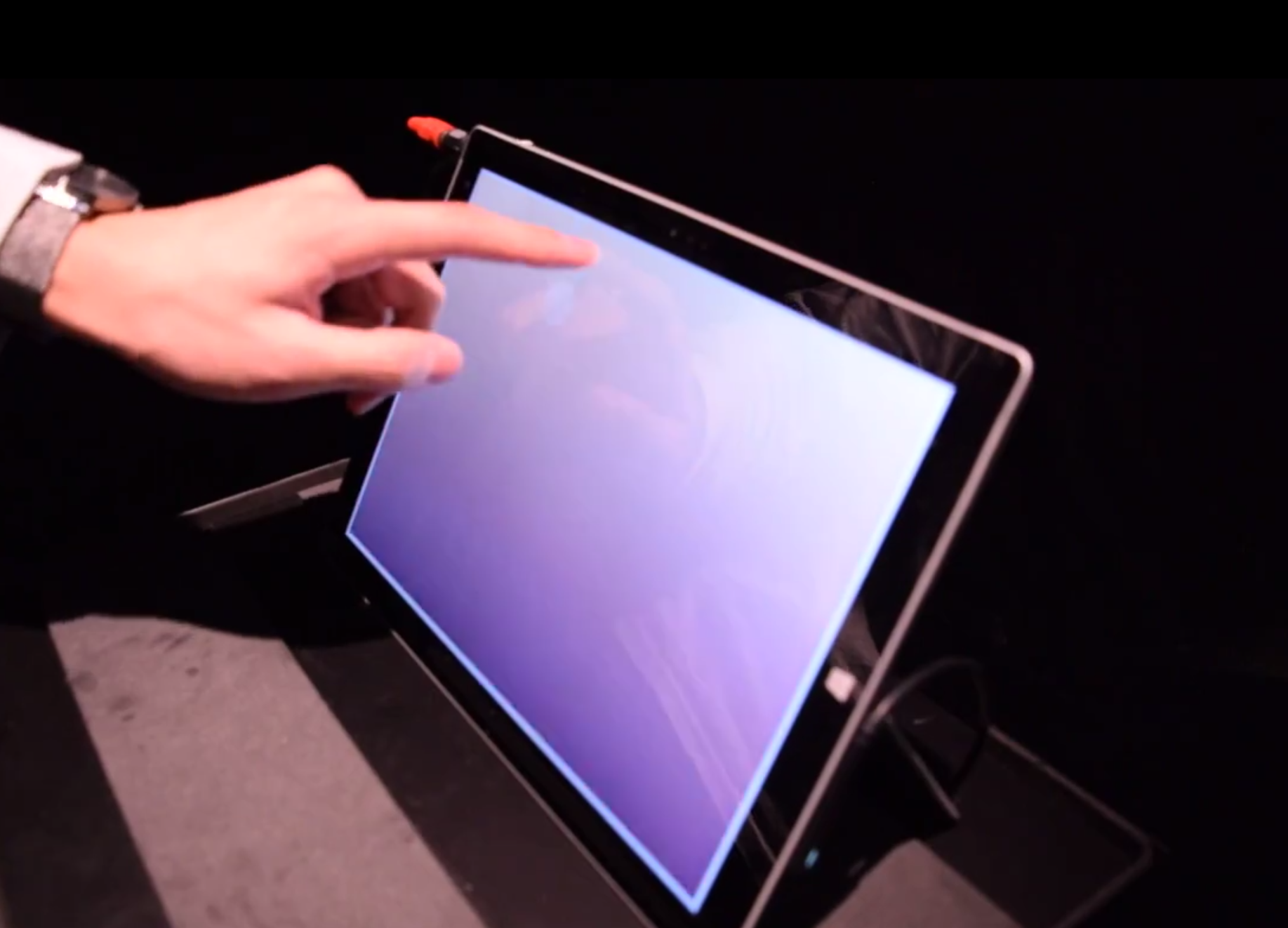
Here are gif highlighting the different elements of the project.
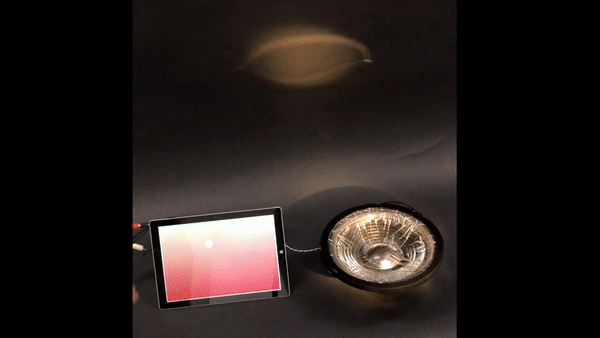
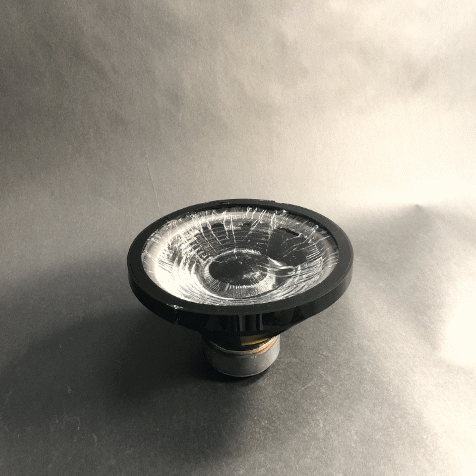
Disassembly of speaker element (and also making a mess along the way)
Process
For this project, I struggled during the conceptual development phase a lot because I did not have a clear idea of the physical form of the final product. Finding Dagny Rewera’s project Invisible Acoustics was really helpful as a reference to begin thinking about how to use different materials and mediums to visualize the effects of sound. It hardest part of the project is the constant trial and error I had to do to find an optimal way to show and see the vibrations caused by the music. I had a lot of assistance in procuring materials and speaker woofers to begin testing early on. This is the first time I have used water in my project and it was hard to make sure the woofers were protected from the water. Fabrication was very minimal to make acrylic rings that will fit around the woofers and hold the cling wrap in place. I used p5js to make an interface that will allow me to play different frequencies of sounds based on where the finger is touching on the screen as a way to integrate a possibility for other users to interact with the piece after the performance.

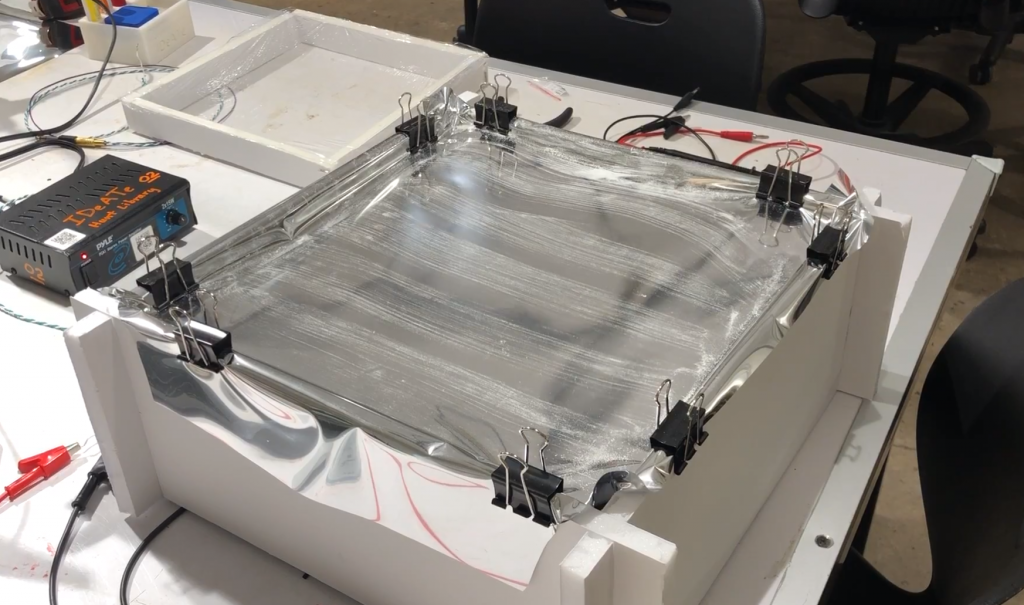
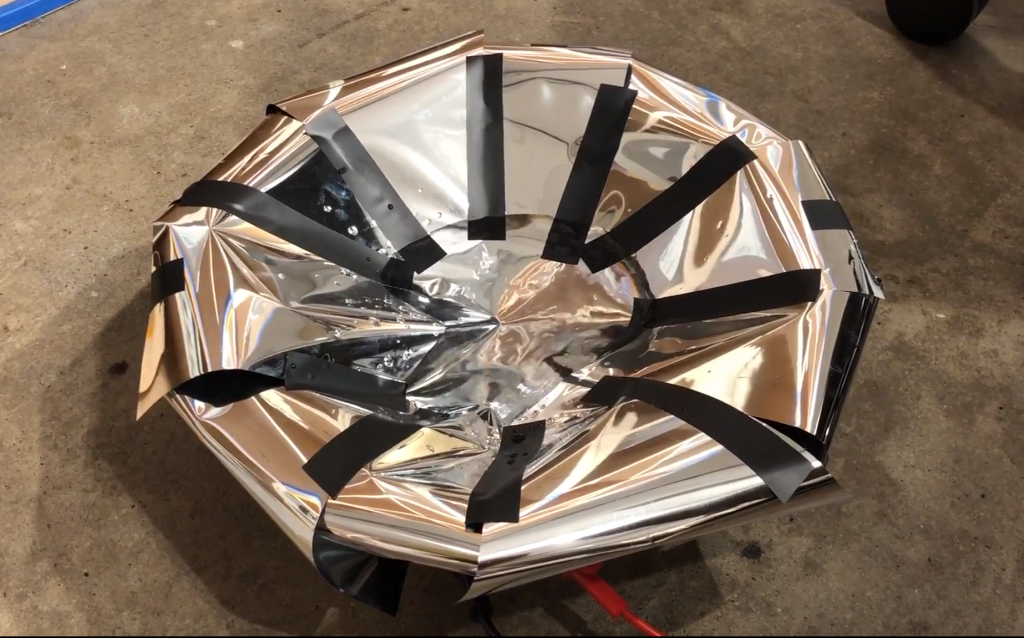
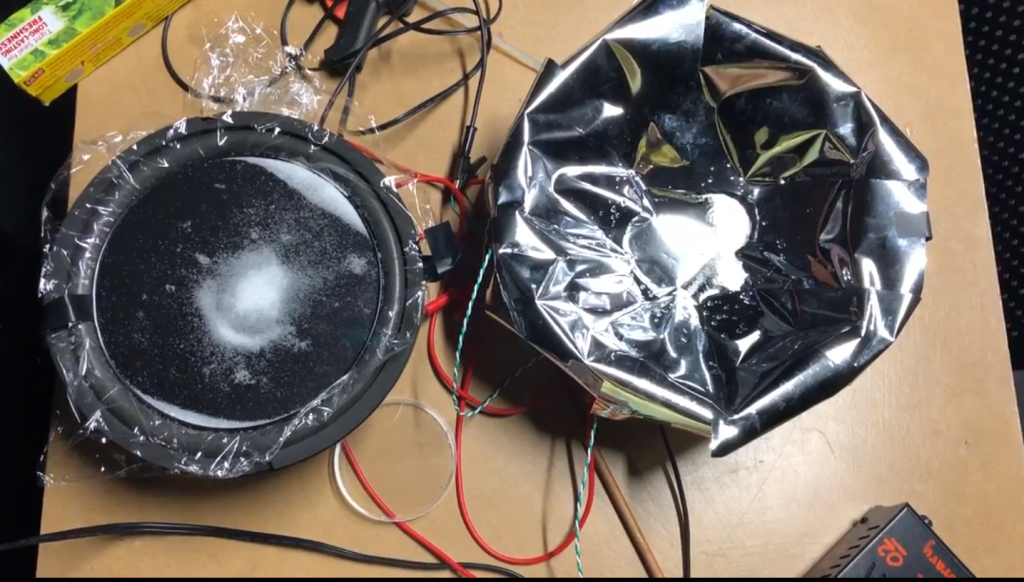

Testing the water reflection effect
//Scarlet Tong
//sntong@andrew.cmu.edu
//Activating the body
//Gradient Sound Interface
function setup() {
createCanvas(windowWidth-20, windowHeight-20);
osc = new p5.TriOsc(); // set frequency and type
fft = new p5.FFT();
frameRate(80);
}
function draw() {
let millisecond = millis();
var color1 = color(mouseX, 233, 210,200);
var color2 = color(mouseY, 75, 95,100);
setGradient(0, 0, windowWidth, windowHeight, color1, color2, "Y",255);
noStroke();
fill(255,255,255,100);
ellipse(mouseX, mouseY, 100, 100);
// change oscillator frequency based on mouseX
if (mouseIsPressed) {
osc.start();
let freq = map(mouseX, 0, width, 40, 200);
osc.freq(freq);
let amp = map(mouseY, 0, height, 0.5, 0.01);
osc.amp(amp);
}
else {
osc.stop();
}
}
]]>
Users enter a dimly lit space with the goal to light up cylindrical paper lamps by matching the right wires together. Each wire is paired by having the same material on each end. Music could be activated if the user switches the correct lamp on and off quickly as a bonus feature.
The piece aims to stimulate the design process: 1) the designer enters a new problem space and begins to search for answers blindly. 2) Through intuition, the designer generates possible solutions that may or may not be fruitful to the design. 3) Further down the process the goal becomes clearer and refining the design becomes easier, reflected by the increase in light to identify the correct wires to pair together.
Music samples used in the project are made by students from Exploded Ensemble class.
Final installation
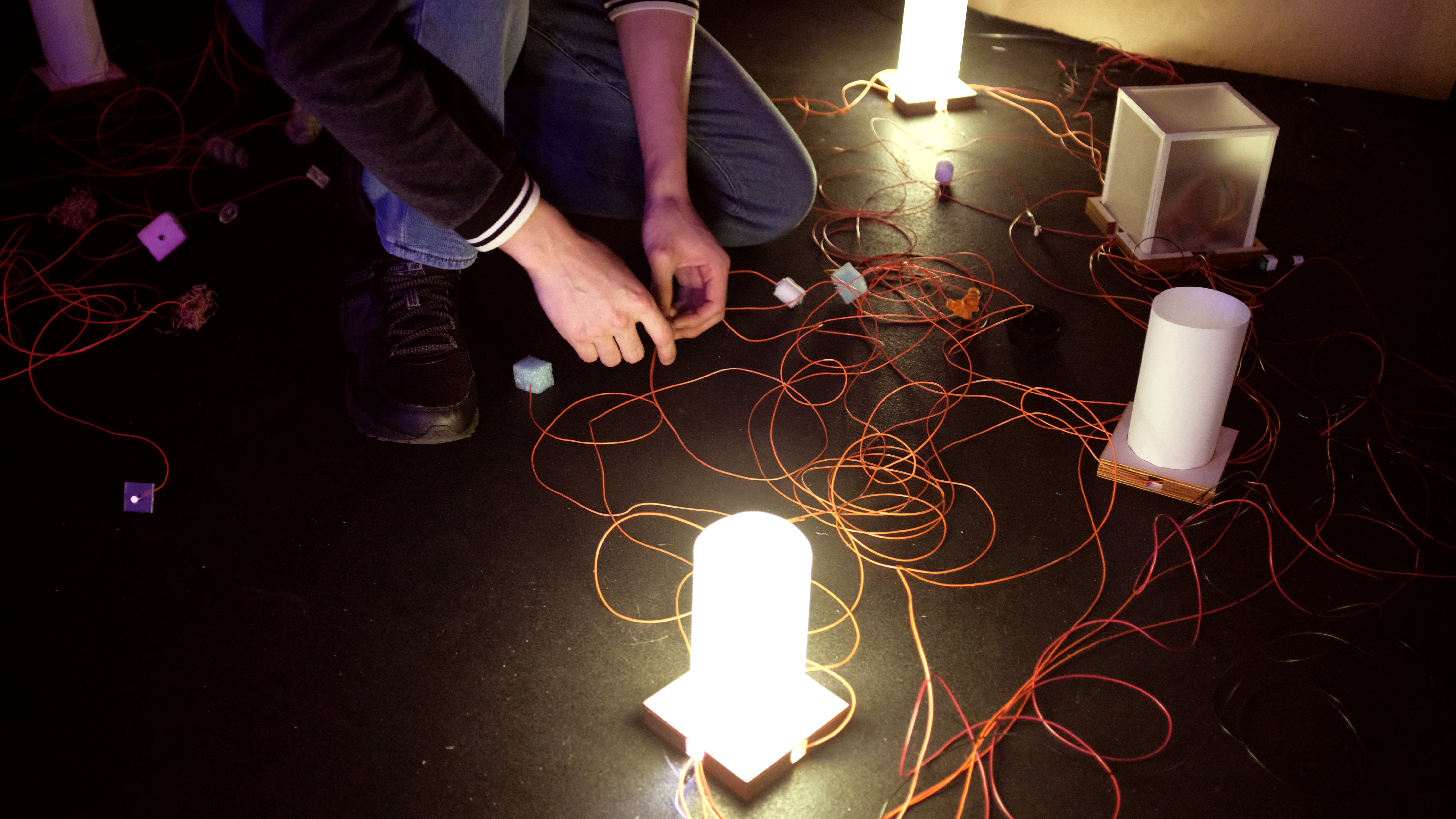
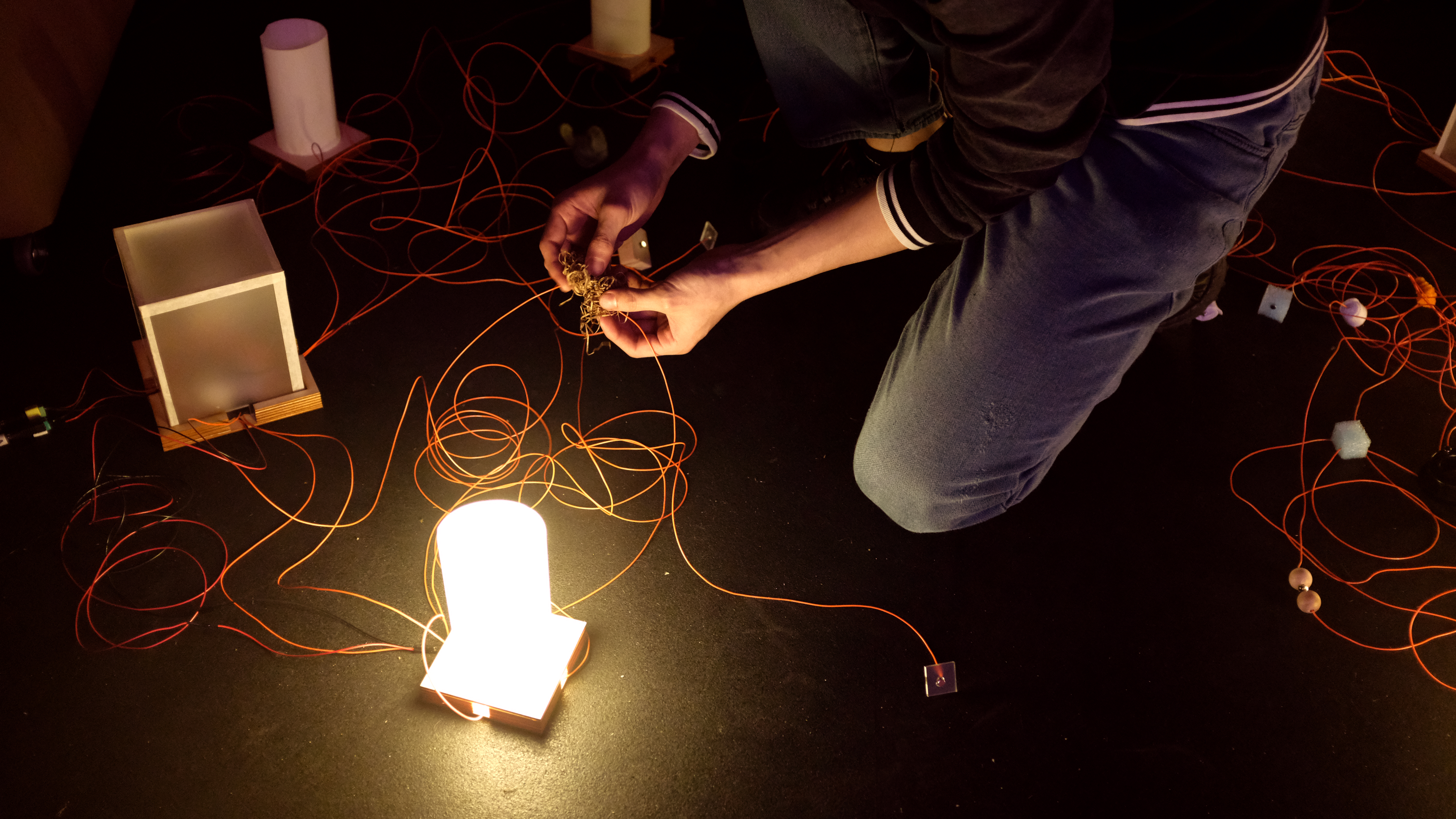
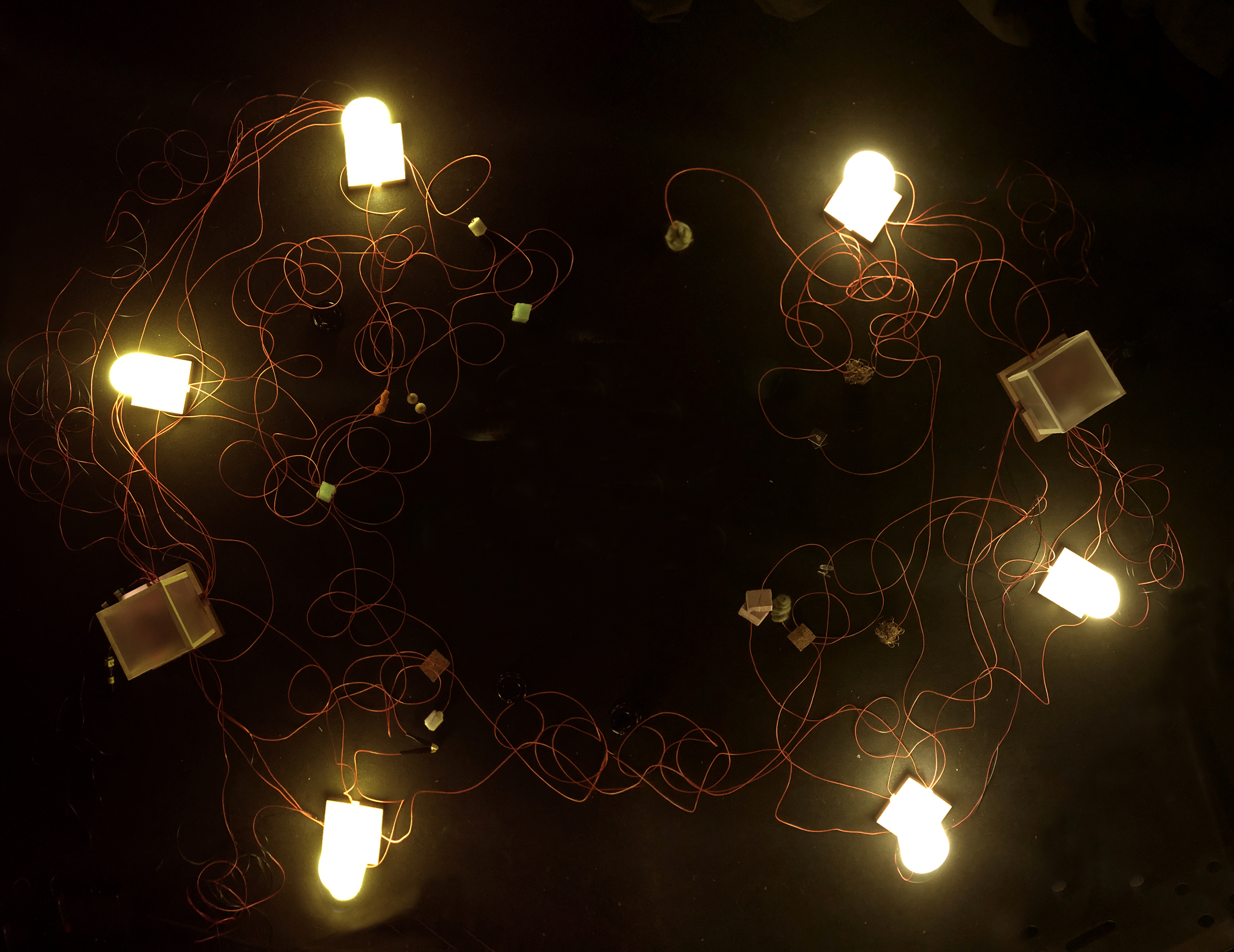
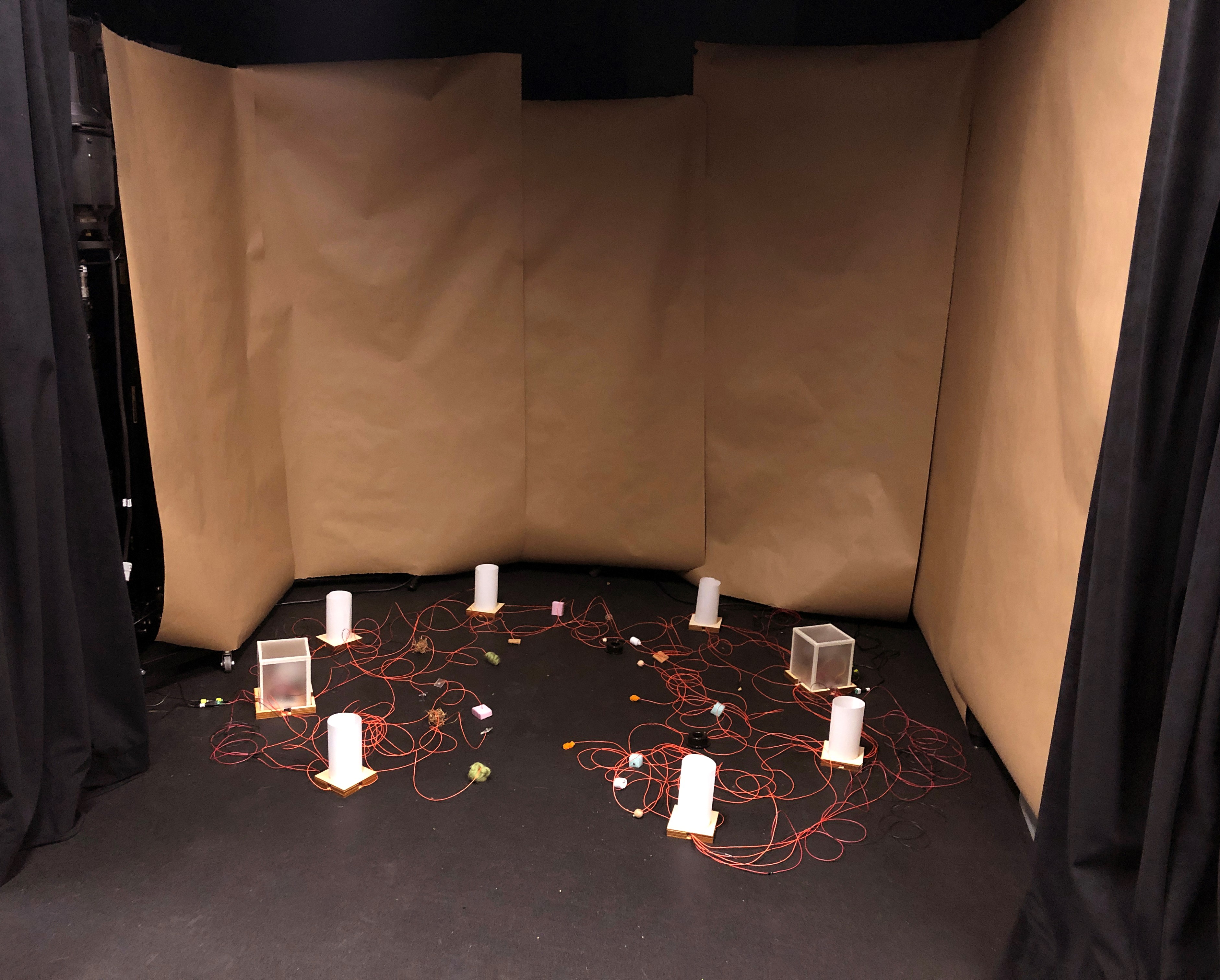
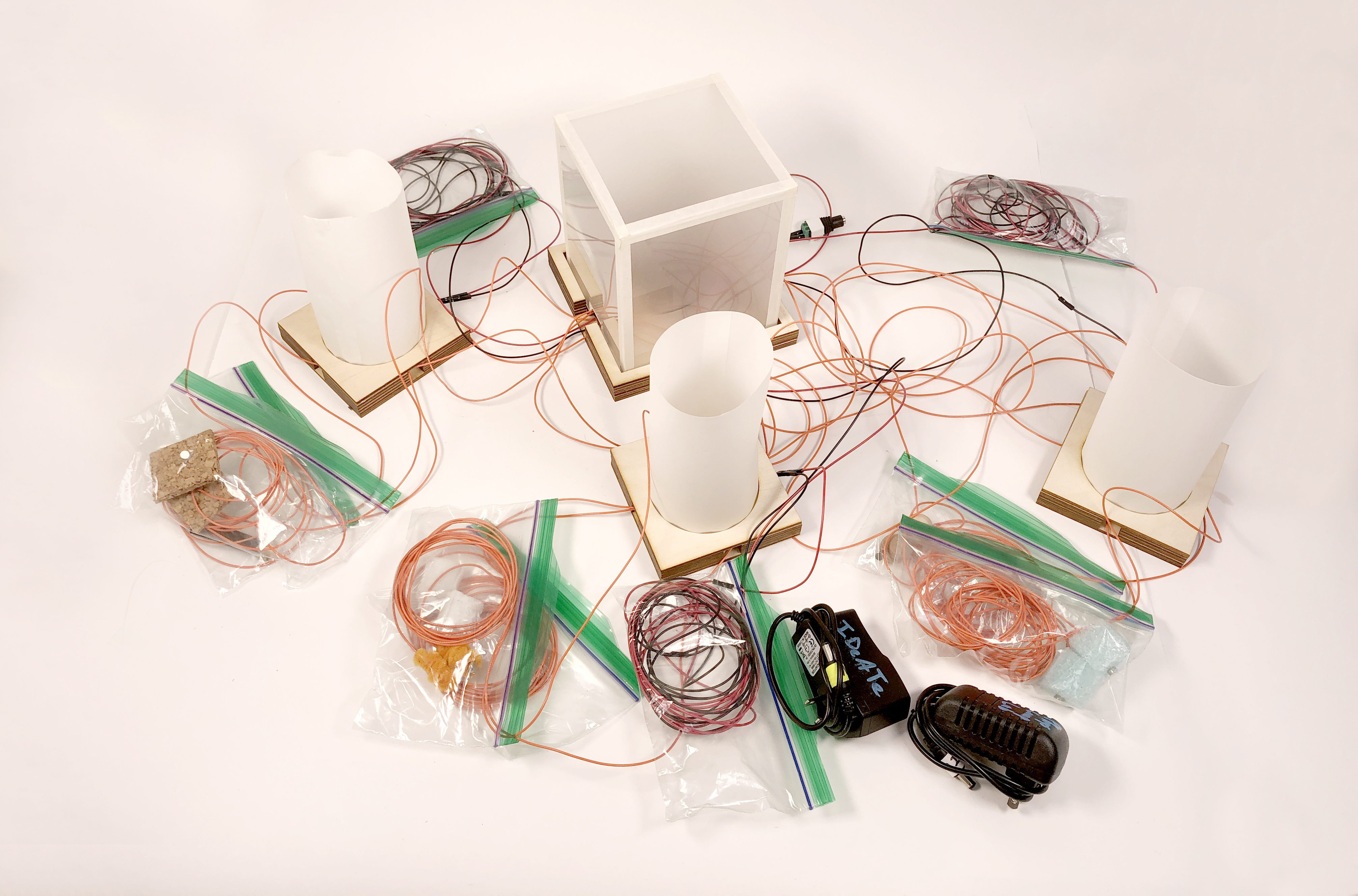
The organization helps with transportation and storage
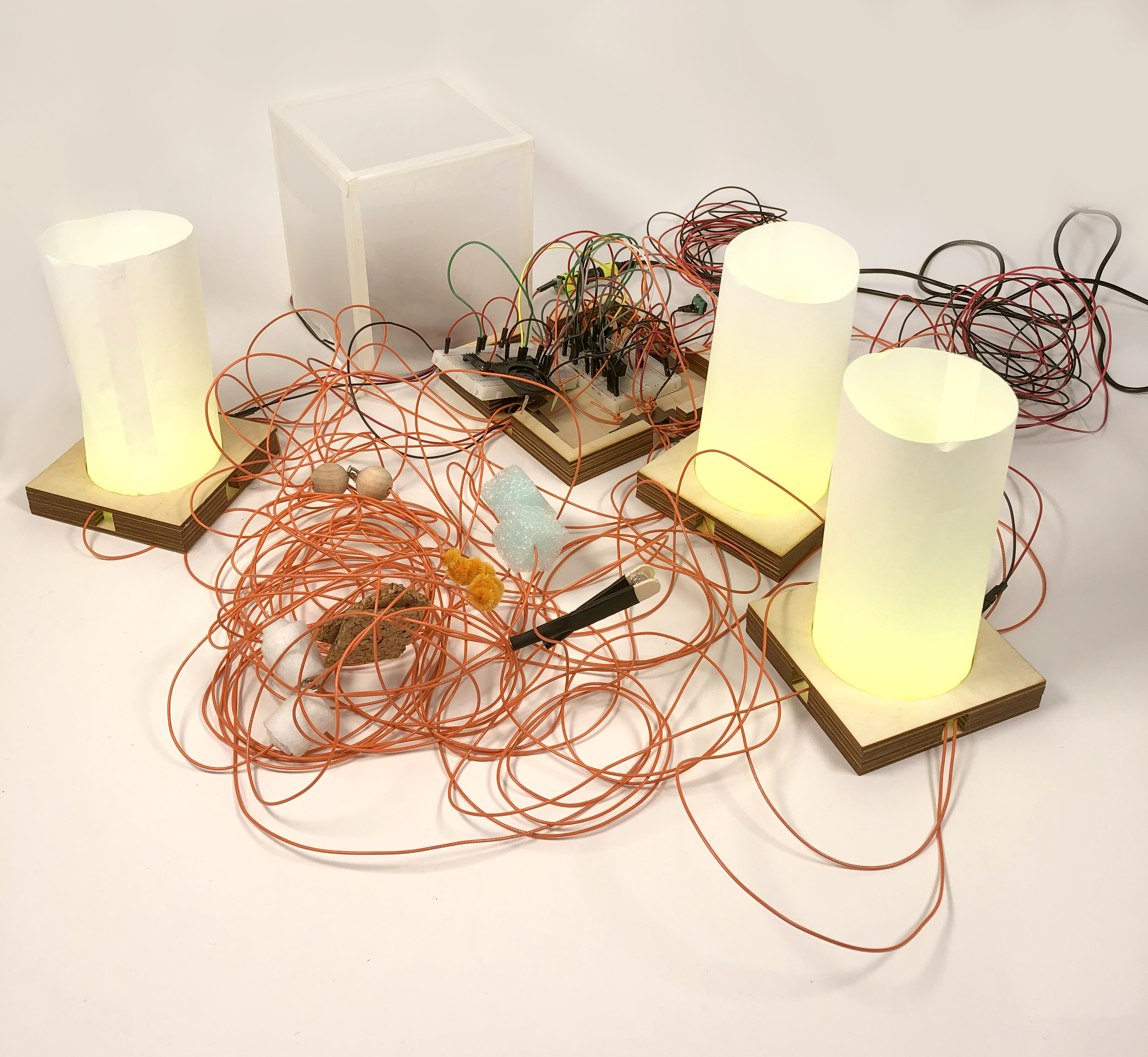
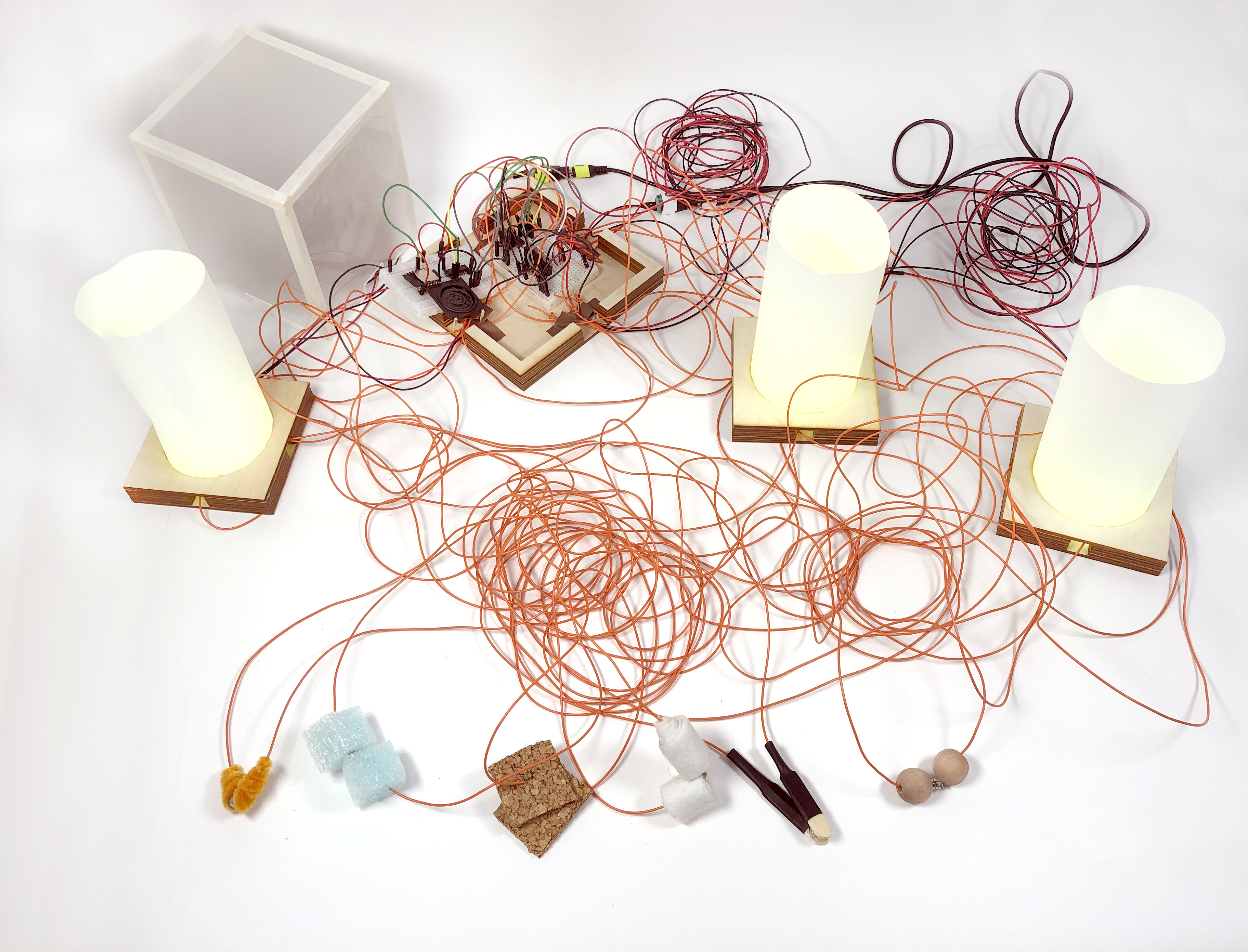
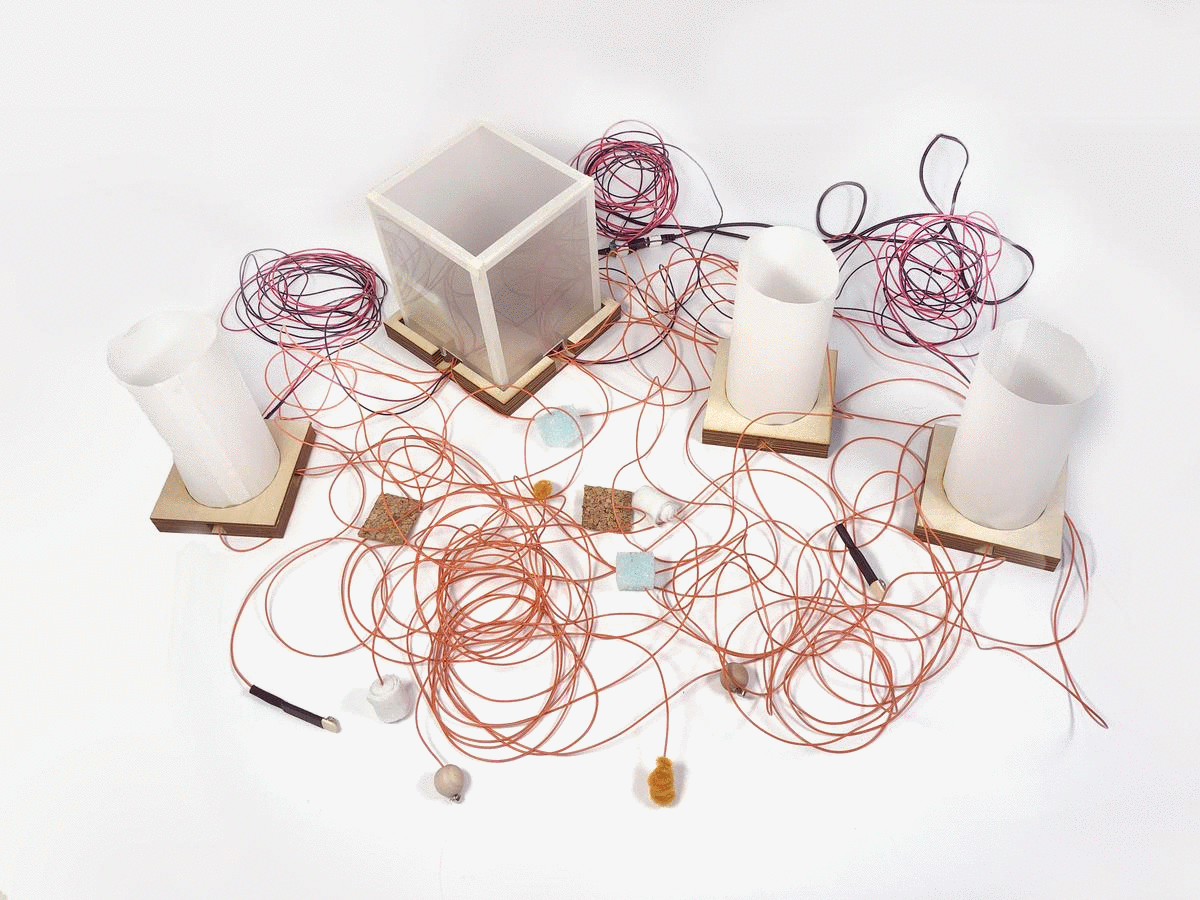
Process
As it was my first time working with a breadboard and anything circuit related, it was intimidating to begin to think about how to realize the logic chips into the project. Under many guidance and help sessions, it is gratifying to see the results and things I learned along the way to realize the project. The messiness from tangled wires resembles how I felt towards the end of the project as if I could begin to piece out some answers and navigate myself through the technical and logic-driven aspects of my own project. The fabrication aspect of the project was easier compared to the technical circuitry as it is familiar grounds for me. With the amount of wire and length, they are things got messy very quickly, thus an organization system of zip lock bags are used to help with transportation and storage of the project.
Fabrication
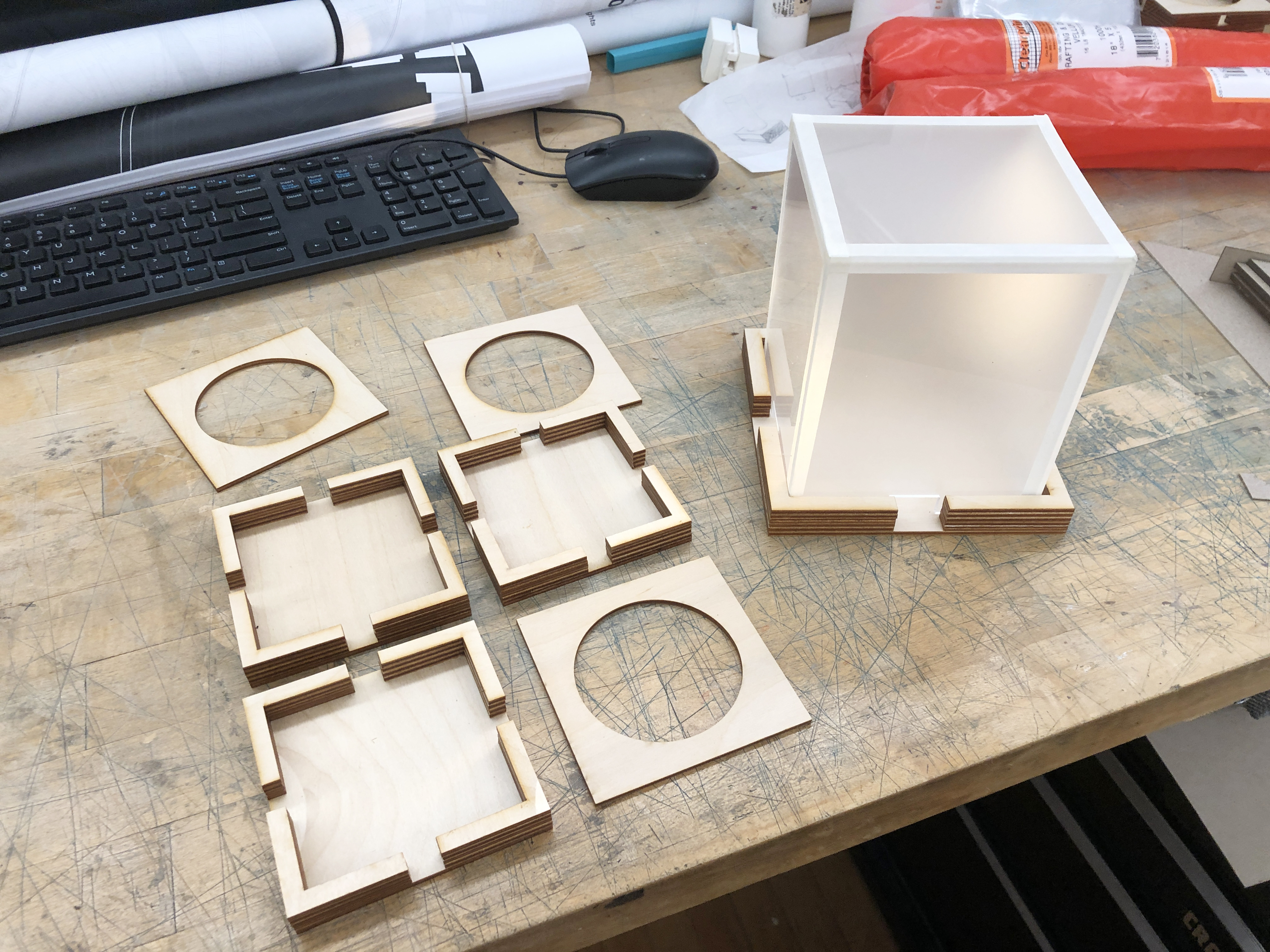
Assembling lamp bases
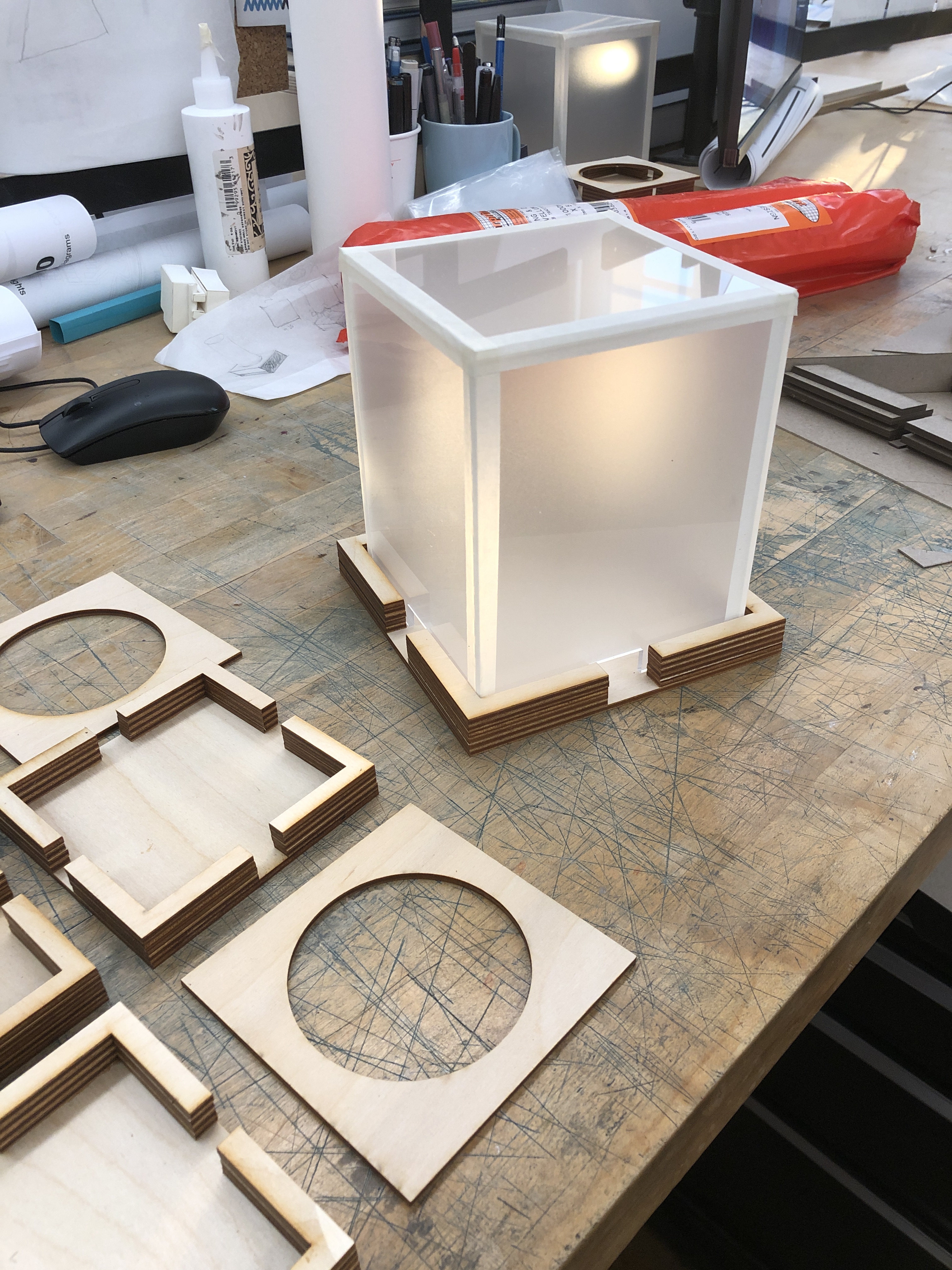
Close up on acrylic control tower
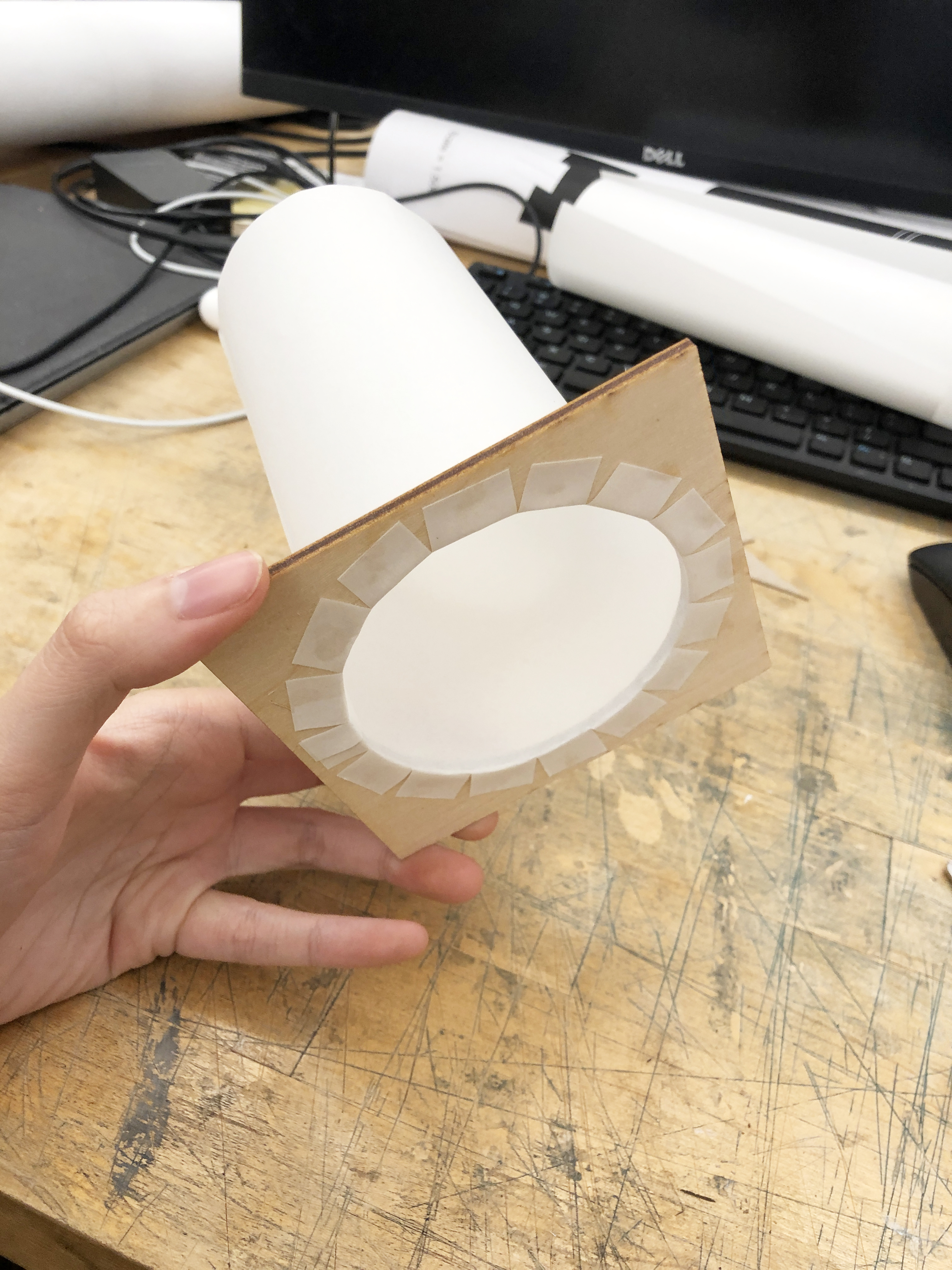
Attaching velum to wooden bases
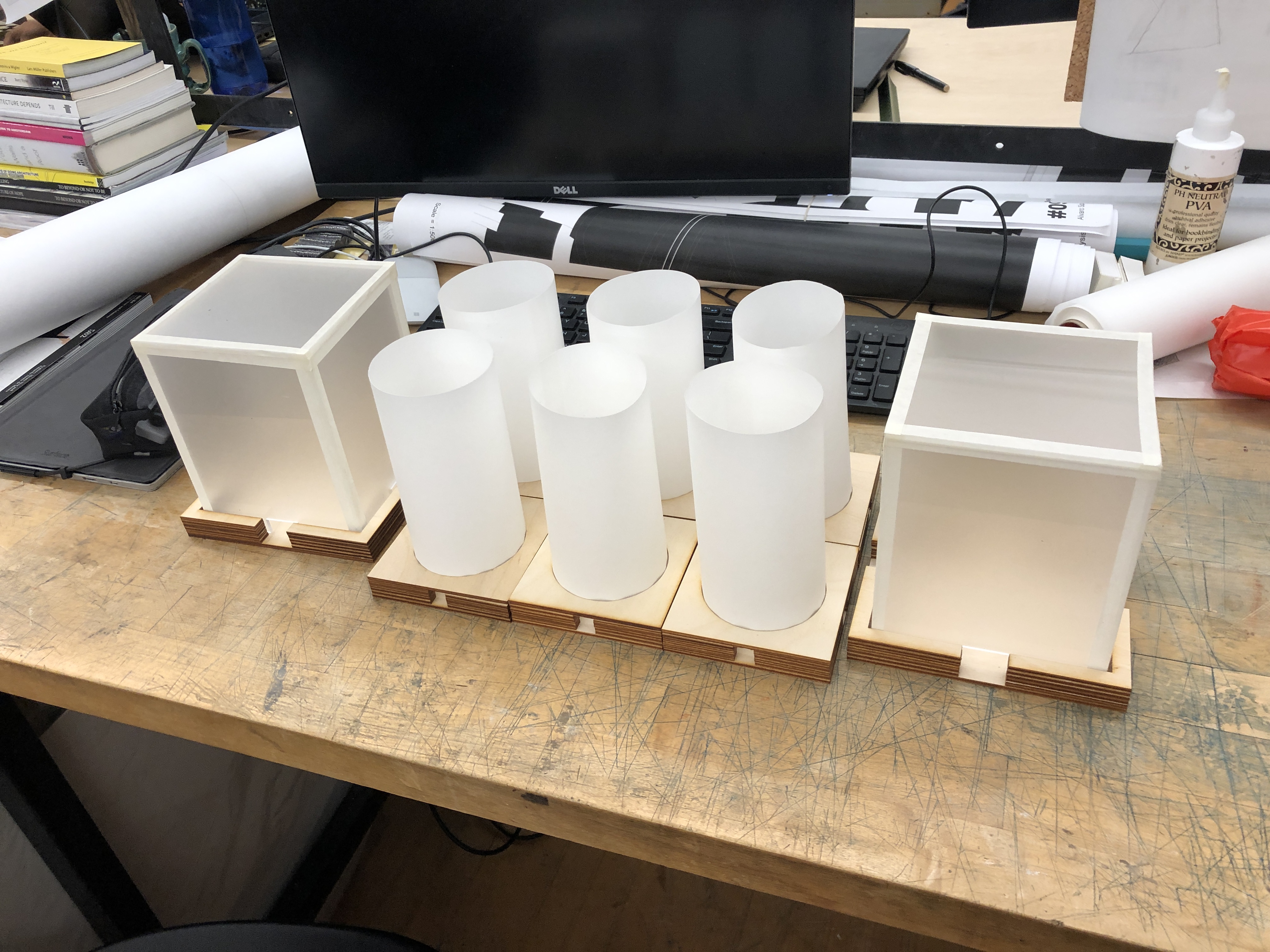
Assembly of all fabricated lamps and control units
Wires and Circuitry
